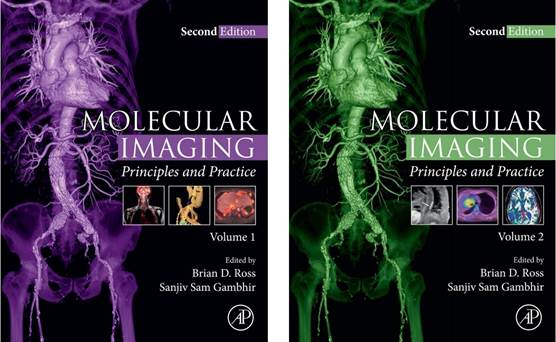Molecular Imaging: Principles and Practice, Volumes 1 and 2, Second Edition, published by Elsevier on August 2021, is one of the most authoritative and comprehensive resources available in the molecular-imaging field. With 90 chapters and over 1,600 pages, the book was written by over 170 of the leading scientists from around the world. Associate Prof. He Shuqing from College of Health Science and Environmental Engineering, Shenzhen Technology University (SZTU) is the first author of Chapter 23 — Near-Infrared II Optical Imaging. The full text of the paper can be found at: https://www.sciencedirect.com/science/article/pii/B9780128163863000259.

The cover of Molecular Imaging: Principles and Practice, Volumes 1 and 2 [Photo/https://www.sciencedirect.com]
The multidisciplinary field of Molecular Imaging (MI) of living subjects continues to expand with dramatic advances in chemistry, molecular biology, therapeutics, engineering, medical physics and biomedical applications. It is a growing biomedical research discipline that enables the visualization, characterization, and quantification of biologic processes taking place at the cellular and subcellular levels within intact living subjects.

The comparison between different wavelengths [Photo/ College of Health Science and Environmental Engineering]
Traditionally, the wavelengths of fluorescence imaging range from Ultraviolet-visible (UV-Vis) (400-700 nm) to the first near-infrared (NIR-I) (700-950 nm) window. This window has low penetration depth and low spatial resolution in tissue, which has a negative impact on the application of fluorescence imaging. In Chapter 23, Associate Prof. He Shuqing introduced very recent progress achieved in the second near-infrared (NIR-II) fluorescence imaging. NIR-II (1000–1700 nm) imaging is a promising noninvasive imaging technique for preclinical research due to the reduced scattering, minimal absorption, and negligible autofluorescence, affording high resolution and high signal-to-noise ratio images at deep tissue depths, which has broad application prospects in biomedical imaging.
Drafted by Daisy(姚琦)/ International Cooperation & Student Affairs Office
Revised by International Cooperation & Student Affairs Office
Edited by International Cooperation & Student Affairs Office
